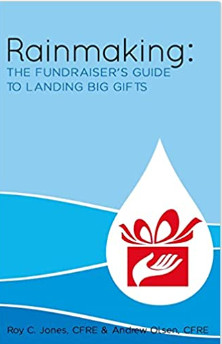As with any type of endeavor, major gift development will only succeed if you and your organization are committed to it. So often I have talked to organizations that are committed to the concept of major gifts; they are committed to the idea of major gifts, but they are not committed to “the work” of major gift development.
Don’t get me wrong. They are working. They are working hard, but not at the real work of major gift development. The executive director is doing what she thinks helps produce big gifts. The director of development is doing what he thinks generates major gifts. Board members are doing what they think raises money. Again, don’t get me wrong. They are all working and all working hard, but are failing because there is no central focus or coordination with the overall development program.
Major gifts do not happen because someone who is rich suddenly decides to write a check. Major gifts blossom only after focused cultivation and a moves management process. It can take a few months for donors who have previously made a large number of direct response donations in the mail or on the internet or it can take years for the prospect who has not made as many direct response donations. Remember, donors with capacity never just show up and start writing big checks. People with capacity begin by making small investments to a charity and depending upon how they are stewarded (cultivated) the donor begins upgrading their investment in the charity.
Major gift development requires a coordinated plan. Without it you will be doomed seeing your best donors walk away from your charity to support another. Just imagine, you are a donor with capacity (a.k.a. you’re loaded) over the last year you began supporting a charity with a gift of $100, then $1,000 and then $10,000. What happens? Your new charity cranks up the number of direct mail pieces you get from 12 a year to 18 appeals a year. You get the monthly newsletter (another 12 appeals). Then in a span of only 10 days something special happens:
- You start getting calls from a “salesman” at the charity, someone who calls himself a major gift officer.
- You get two calls and two different hand written notes from two members of the board of directors.
- The President calls and leaves you a voicemail.
- The director of development calls to invite you to a dinner with other major donors
- And then to top it off, the major gift officer knocks on your door unannounced to give you in person a thank you letter.
What happens? You guessed it! The donor says that is it… I have had enough. They ask to be removed from your mailing list and they stop giving to your charity. You pushed them out of the boat because you pushed them too hard in a short period of time. You used all the right techniques, but used them without a coordinated plan and timeline.
The lapsed rate among major donors can be as high as 40 to 60 percent if you are not plugging major donors into a coordinated plan. Allowing (or forcing) your biggest, best donors to walk away can have a dramatic on your charity’s bottom line.
Your plan should outline your goals of major gifts fundraising and its role in your overall development plan. Your plan should create a general strategy of opportunities for engaging the donor with the organization, and plan how to cultivate each individual relationship.
If you build the relationship, the money will follow…if your contact with the donor is only about money it will not succeed. You major gift program consists of hundreds of individual donor plans. Here is an example of an individual donor plan. Individual Donor Plan – Quadrant Analysis Template


